Effect of 21 different nitrogen sources on global gene expression in the yeast Saccharomyces cerevisiae
- PMID: 17308034
- PMCID: PMC1899933
- DOI: 10.1128/MCB.01084-06
Effect of 21 different nitrogen sources on global gene expression in the yeast Saccharomyces cerevisiae
Abstract
We compared the transcriptomes of Saccharomyces cerevisiae cells growing under steady-state conditions on 21 unique sources of nitrogen. We found 506 genes differentially regulated by nitrogen and estimated the activation degrees of all identified nitrogen-responding transcriptional controls according to the nitrogen source. One main group of nitrogenous compounds supports fast growth and a highly active nitrogen catabolite repression (NCR) control. Catabolism of these compounds typically yields carbon derivatives directly assimilable by a cell's metabolism. Another group of nitrogen compounds supports slower growth, is associated with excretion by cells of nonmetabolizable carbon compounds such as fusel oils, and is characterized by activation of the general control of amino acid biosynthesis (GAAC). Furthermore, NCR and GAAC appear interlinked, since expression of the GCN4 gene encoding the transcription factor that mediates GAAC is subject to NCR. We also observed that several transcriptional-regulation systems are active under a wider range of nitrogen supply conditions than anticipated. Other transcriptional-regulation systems acting on genes not involved in nitrogen metabolism, e.g., the pleiotropic-drug resistance and the unfolded-protein response systems, also respond to nitrogen. We have completed the lists of target genes of several nitrogen-sensitive regulons and have used sequence comparison tools to propose functions for about 20 orphan genes. Similar studies conducted for other nutrients should provide a more complete view of alternative metabolic pathways in yeast and contribute to the attribution of functions to many other orphan genes.
Figures
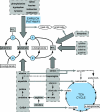

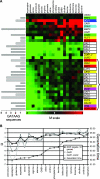
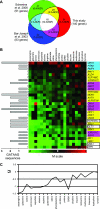
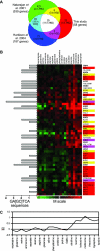


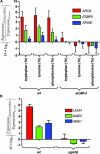

Similar articles
-
Comparative proteomic analysis of Saccharomyces cerevisiae under different nitrogen sources.J Proteomics. 2014 Apr 14;101:102-12. doi: 10.1016/j.jprot.2014.01.031. Epub 2014 Feb 12. J Proteomics. 2014. PMID: 24530623
-
Steady-state and dynamic gene expression programs in Saccharomyces cerevisiae in response to variation in environmental nitrogen.Mol Biol Cell. 2016 Apr 15;27(8):1383-96. doi: 10.1091/mbc.E14-05-1013. Epub 2016 Mar 3. Mol Biol Cell. 2016. PMID: 26941329 Free PMC article.
-
Gln3-Gcn4 hybrid transcriptional activator determines catabolic and biosynthetic gene expression in the yeast Saccharomyces cerevisiae.Biochem Biophys Res Commun. 2011 Jan 21;404(3):859-64. doi: 10.1016/j.bbrc.2010.12.075. Epub 2010 Dec 22. Biochem Biophys Res Commun. 2011. PMID: 21184740
-
Regulation of Sensing, Transportation, and Catabolism of Nitrogen Sources in Saccharomyces cerevisiae.Microbiol Mol Biol Rev. 2018 Feb 7;82(1):e00040-17. doi: 10.1128/MMBR.00040-17. Print 2018 Jun. Microbiol Mol Biol Rev. 2018. PMID: 29436478 Free PMC article. Review.
-
Nitrogen catabolite repression in Saccharomyces cerevisiae.Mol Biotechnol. 1999 Aug;12(1):35-73. doi: 10.1385/MB:12:1:35. Mol Biotechnol. 1999. PMID: 10554772 Review.
Cited by
-
Impact of corn shredlage and crabtree-negative yeast on silage quality and rumen fermentation characteristics.Sci Rep. 2024 Nov 2;14(1):26474. doi: 10.1038/s41598-024-77791-y. Sci Rep. 2024. PMID: 39488594 Free PMC article.
-
Yeast homologs of human MCUR1 regulate mitochondrial proline metabolism.Nat Commun. 2020 Sep 25;11(1):4866. doi: 10.1038/s41467-020-18704-1. Nat Commun. 2020. PMID: 32978391 Free PMC article.
-
The effector AWR5 from the plant pathogen Ralstonia solanacearum is an inhibitor of the TOR signalling pathway.Sci Rep. 2016 Jun 3;6:27058. doi: 10.1038/srep27058. Sci Rep. 2016. PMID: 27257085 Free PMC article.
-
Transcriptome Analysis Unveils Gln3 Role in Amino Acids Assimilation and Fluconazole Resistance in Candida glabrata.J Microbiol Biotechnol. 2021 May 28;31(5):659-666. doi: 10.4014/jmb.2012.12034. J Microbiol Biotechnol. 2021. PMID: 33879640 Free PMC article.
-
Feedback regulation of TORC1 by its downstream effectors Npr1 and Par32.Mol Biol Cell. 2018 Nov 1;29(22):2751-2765. doi: 10.1091/mbc.E18-03-0158. Epub 2018 Aug 29. Mol Biol Cell. 2018. PMID: 30156471 Free PMC article.
References
-
- Andre, B. 1990. The UGA3 gene regulating the GABA catabolic pathway in Saccharomyces cerevisiae codes for a putative zinc-finger protein acting on RNA amount. Mol. Gen. Genet. 220:269-276. - PubMed
-
- Andre, B., C. Hein, M. Grenson, and J. C. Jauniaux. 1993. Cloning and expression of the UGA4 gene coding for the inducible GABA-specific transport protein of Saccharomyces cerevisiae. Mol. Gen. Genet. 237:17-25. - PubMed
Publication types
MeSH terms
Substances
LinkOut - more resources
Full Text Sources
Molecular Biology Databases
